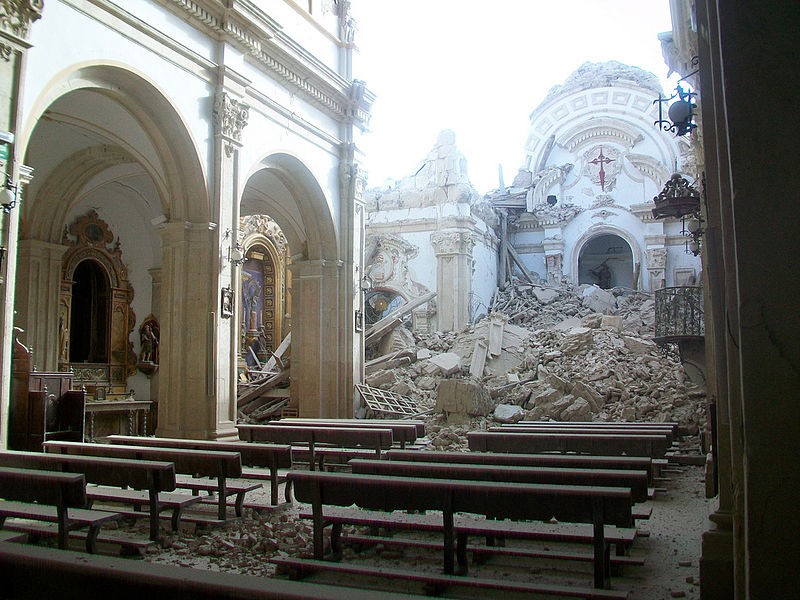 Robin Wylie studied geophysics at the University of Edinburgh, and then spent some time working at a volcanic observatory in Hawaii before starting his Master’s in Earth and Atmospheric Physics at the University of Leeds. Robin is now doing a PhD at University College London, looking at magma chamber processes at Mt Etna, Sicily. This is Robin’s first article for the GfGD Blog, but you can keep up with future articles he writes through his personal blog, ‘Earth Science News‘.
Robin Wylie studied geophysics at the University of Edinburgh, and then spent some time working at a volcanic observatory in Hawaii before starting his Master’s in Earth and Atmospheric Physics at the University of Leeds. Robin is now doing a PhD at University College London, looking at magma chamber processes at Mt Etna, Sicily. This is Robin’s first article for the GfGD Blog, but you can keep up with future articles he writes through his personal blog, ‘Earth Science News‘.
In the sphere of natural disasters, earthquakes in particular stand out for their ability to wreak random devastation. Hurricanes can be tracked, and even volcanic eruptions might give the occasional rumble of warning, yet well into the 21st century when and where an earthquake will strike still seems as unpredictable as ever. However evidence has recently emerged which could challenge this long-standing view, and potentially change the way we think about earthquakes altogether. In October 2012 – just as six seismologists were about to be convicted by an Italian court in the “earthquake prediction” fiasco – a paper appeared which grabbed headlines for a similar, but altogether stranger reason: could human actions actually be causing earthquakes?

Damage to buildings following the earthquake in Lorca, Spain
Source: I-science times
Published in the journal Nature Geoscience, this ground breaking article focused on an extremely peculiar earthquake, which struck the town of Lorca, Southern Spain, in May 2011. The quake – although only a modest magnitude 5.1 – was the deadliest that the country had seen for half a century, killing nine people and injuring hundreds more. But this disaster attracted the attention of Earth Scientists for a different reason: the Lorca earthquake was remarkable because it occurred extremely close to the surface, perhaps as shallow as 2km. Quakes of this size almost always occur at much greater depths, and so do not usually cause much damage – the reason the Lorca event was so destructive was precisely because it occurred at such a shallow depth. It quickly became clear, therefore, that understanding this enigmatic disaster was vital from a humanitarian, as well a scientific standpoint.
This was the task that a group of Earth Scientists from The University of Western Ontario and the Italian Geophysical Institute set out to tackle. Using new satellite observation techniques, they began to examine the ground motion that the earthquake had caused – how much and in what direction the Earth’s surface had shifted – and it was this that led to their first breakthrough. The pattern of deformation they saw allowed the researchers to pinpoint the precise location of the earthquake: movement of the shallow Alhama de Murcia fault, south of Lorca, was responsible for the disaster.
However, locating the earthquake‘s epicenter was only half the problem – the mere existence of a shallow fault, in itself, is not unusual. The key question in the case of Lorca was just how such an intense earthquake was able to occur, at depths where they are simply not expected to be seen: what was different about this particular part of Spain? As they searched for an explanation, the researchers noticed that the Alhama de Murcia fault was located in an area that had undergone extensive drilling for groundwater. In the 50 years leading up to the 2011 earthquake, the Alto Guadalentin aquifer, just south of Lorca, had been the site of such severe drainage that the local water table had fallen by at least 250 meters, causing the ground to subside at a rate of tens of centimetres per year.
It was the researchers’ next step which started to raise eyebrows: they suggested that, since the Lorca earthquake occurred so close to the Alto Guadalentin aquifer, the two actually be linked. This might seem like a pretty large step to make – after all, how could something as seemingly harmless as removing water have any connection to an earthquake which reduced a town to rubble? However, as the sinking ground around the aquifer showed, the drilling had unquestionably caused a profound change within the Earth; one which the researchers realised could have more serious consequences than just water loss.
The underlying cause of all earthquakes is a build-up of pressure (or ‘stress’) in the rocks within the Earth. The water in aquifers, which is stored in pores within rocks, actually has a strengthening effect; supporting the aquifer rocks against the extremely high pressures within the Earth. The researchers realised that removing this pore water might therefore have the opposite effect: increasing the pressure that the rocks were exposed to, and so potentially increasing the chance of an earthquake.
In order to test the plausibility of their idea, the researchers created a model to simulate the effect of the water loss on the stress conditions within the Alto Guadalentin aquifer – to assess if it could potentially account for the earthquake. It was here that they made their key breakthrough. The model predicted that the most significant stress change would be confined to a specific region of the aquifer: corresponding to the location of the Alhama de Murcia fault, where the 2011 earthquake had occurred. In short, here was evidence which suggested a remarkable possibility: the Lorca earthquake, in which nine people lost their lives, might have been linked to, or even caused by, human actions.
Understandably, these findings immediately attracted the attention of the scientific community, and the media at large. Even more so the residents of Lorca, for whom this issue goes beyond scientific curiosity; the thought that their terrible ordeal might have been preventable must surely stick in the throat.
This study does not, of course, provide conclusive proof that human actions were responsible: the south of Spain has been tectonically active for millions of years, and the Lorca event could still have been an entirely natural disaster. However it is impossible to ignore how well this new data agrees with – though ’predicts’ would still be going to far – the location of the earthquake. What’s more, if water removal did play a role, it would go some way to explaining how the earthquake was able to occur at such an unusually shallow depth; one possibility being that the increase in stress caused by the drilling might have triggered an earthquake which otherwise would not have occurred. At the very least, these new findings should serve as a sharp reminder: that our exploitation of the resources beneath our feet can have farther reaching consequences than meets the eye. And though research is still at a very early stage, the possibility that deep drilling could be causing damaging earthquakes is one that – especially as the demand for subsurface reserves of oil, gas are only about to increase – must be explored very carefully.

Jude
We had human-caused earthquakes in Denver, Colorado in the 1960s. Here’s more information: http://oldcoloradonews.wordpress.com/2011/04/09/the-denver-earthquake-series-of-the-1960s/